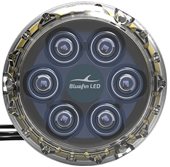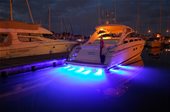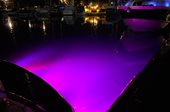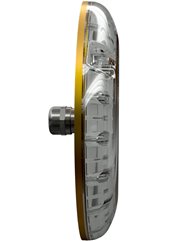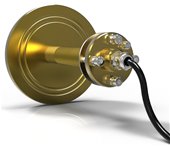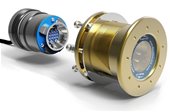In recent years, this technology has become very widespread, capable of embellishing the boat, gaining aesthetically and functionally. Today it is one of the most used aesthetic finishing touches in the boating industry.
The underwater lighthouse is commonly placed on the hull in the aft area to illuminate the underwater world, the light is retransmitted by the water creating a very unique halo around the boat for a very welcoming atmosphere and making the boat look better finished.
Spectacular is the vision of the submarine bottom that seems to approach us with all its charm and mystery. Small fish approach marvelled at the light and it is as if they were dancing around it, a spectacular sight for children and adults alike. If we are also lovers of swimming or diving at night, then it is really unexpected the involvement that these lights can create.
The underwater LED also has its benefits from a functional and safety point of view. Being a light reflected by the water and therefore not direct, the light does not disturb the view, rather it increases the perception of what is around the boat and the bottom. For example, in roadsteads we can better monitor if the boat is near shallows, or while sailing notice before any obstacles. Instead, in port we could have better lighting of the area around the walkway, allowing a safer entrance on board.
It should be remembered that in Italy the use of a light source for fishing is not permitted, as was once the case with lamparas. For the rest, we have no other specific prohibition, but common sense will certainly push us to avoid using them in protected areas and in any case to use them with moderation.
